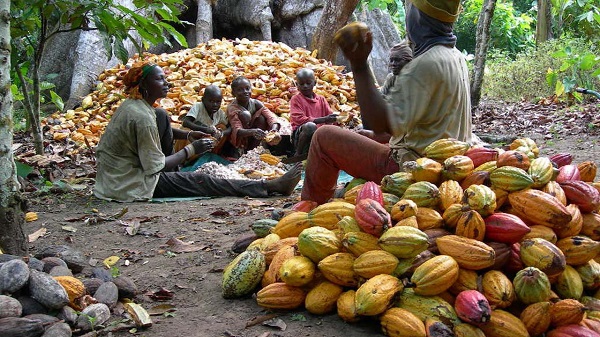Starting Maize Production And Export From Nigeria
One of the food crops grown in Nigeria is Maize. Maize (Zea mays L.), or corn as it is called in USA, has a multitude of uses and ranks second to wheat among the world’s cereal crops in terms of total production. Also, because of its worldwide distribution and lower prices relative to other cereals, maize has a wider range of uses than any other cereal.
Worldwide production of maize is 785 million tons, with the largest producer, the United States, producing 42%. Africa produces 6.5% and the largest African producer is Nigeria with nearly 8 million tons, followed by South Africa. Africa imports 28% of the required maize from countries outside the continent.
According to 2007 FAO estimates, 158 million hectares of maize are harvested worldwide. Africa harvests 29 million hectares, with Nigeria, the largest producer in SSA, harvesting 3%, followed by Tanzania.
Yield per hectare of 2-4 tons per hectare should be expected though the actual yield is a function of the seedling used and the agricultural practice carried out during the life span of the crop. It takes about 90 to 120 days for maize to mature. Fertilizer application would help to improve soil fertility and crop yield. You can use 200 kg of NPK fertilizer (25:10:10) per hectare.
Maize can be processed into different products for various end uses at the traditional level and on an industrial scale. One of such products produced from corn (maize) is corn flakes.
Corn flakes are food made by combining corn with sugar, vitamins and minerals to make them as nutritious as possible. For producing the fancy flakes specially designed flaker will be used. At present, corn flakes are popularly known as breakfast food in the world at large and generally taken with milk. Maize is the major raw material used for the manufacture of corn flakes.
Breakfast cereals witnessed current value growth of 25% in 2014. The primary consumers for breakfast cereals continued to be urban consumers. This was because urban consumers prefer a fast arrangement for breakfast due to their lifestyles, and breakfast cereals, especially flakes, provide exactly that. Investment in Maize cultivation can bring huge returns due to the rising demand for the cereal in local and international markets.
Most of the maize that is grown in West Africa is used for human consumption. The green maize may be boiled or roasted before being eaten. Dry maize is most commonly ground or milled before being used for the preparation of a wide variety of local dishes.
Maize can also be used for livestock feed. In many developed countries such as the U.S.A most of the maize produced is used for livestock’s feeding.
Nigeria, Ghana, Guinea and Cameroon are the leading producers in West Africa. However, nearly all the West African maize production is utilized locally and in many West African countries, there is a net importation of maize. The world’s greatest producers of maize are the U.S.A, Brazil, the Soviet Union and Mexico.
Benefits of Maize Cultivation:
Cheap Labour: The cost of labour is very cheap in Nigeria, there is rapid development of physical and industrial infrastructure in terms of communication and transportation and there is a well developed banking system.
Low startup capital: The start-up capital is not high and can easily be sourced.
High Demand For Maize: The potential of the crop is very high because it is an essential commodity needed by all classes of people. Competition for maize by animals and humans makes it an indispensable food commodity.
Food for all: Maize is processed into various forms depending on the country. For instance, maize is made into porridge in West Africa.
In many countries, ground maize is prepared. Traditionally by frying or baking while in all parts of the Africa, fresh corn is boiled or roasted on its cob and serve as a snack. The dry grain maize and can be used to produce Animal feed, Vegetable oil, Baby food, starch, Tuwo, Akamu, Egbo, Pop corn, cornflakes etc.
Worldwide Consumption: Ninety percent of white maize consumption is cultivated in Africa and Central America.
Statistics show that worldwide consumption of maize is more than 116 million tons with Africa consuming 30 percent and sub Saharan Africa 21 percent. Lesotho has the largest consumption per capital with 174kg per year.
Easter and Southern Africa uses 85 percent or its production as food while Africa as a whole uses 95 percent, compared to other world regions that use most of their maize as animal feed.
Yellow Maize: Research shows that yellow maize is preferred in most parts of south America and the Caribbean and it is a preferred animal feed in many regions because it gives a yellow colour to poultry, egg yolks and animal fat.
Maize Varieties:
The following improvement varieties have either been introduced or have been through breeding effort in West Africa:
NSI – a yellow fluit type of maize
Western White – a white floury type
Tsolo – a yellow fluit type
NS5 – a white floury type
Mexico 5 – a white dent type introduced from Mexico
Climate and Soil Requirement:
Maize is a warm-weather crop and cannot withstand freezing. However too high temperature could be injurious to it.
Rainfall in the range of 60-120cm per annum is suitable for maize as long as it is well distributed.
A sandy loam soil is best for maize. The soil must be of high fertility and rich in humus in the top 50cm or so.
Land Preparation:
This may required the application of tractor to reduce the cost of production and to prepare a very good bed for your seed.
The main work of the tractor for maize production is ploughing and harrowing
Planting:
Maize is planted in rows that are about 90cm apart; spacing within the row is about 45cm.
Three or four grains are usually planted in each hole; they are later thinned down to two plants per stand after emergence.
With some varieties, only two seeds are planted per hole and no thinning is done.
Depth of placement of the grains at planting could be 2 – 3cm, but if the soil is relatively dry at planting time, the seeds should be planted a bit deeper.
The exact time for planting maize in West Africa varies with location in the rain forest area, where the rainy season is long, two crops of maize can be grown in each season. Early maize is planted in late March or early April, while the late maize is planted in mid-August.
Fertilizer Application:
Fertilizer recommendations for maize vary with the type of soil on which it is grown.
The organic (manure) can be applied if the land is not sufficiently fertile.
The organic (N.P.K.) is very compulsory after the second week planting.
You can top it with nitrogen like urea after the 6th week.
Apply matchbox full fertilizer per plant.
Weeding:
All through the growing season, weeds must be kept in control.
This can be done with hoe or cutlass, but the best method is herbicide (agro-chemical) especially in case of large scale farming.
If hoe weeding is done, the first weeding is performed at about 3 weeks after planting while the second one is done 3-4 weeks later.
The use of herbicides to control weeds in maize is becoming widespread in West Africa. The herbicide is applied within the first week after planting.
Simazine and Atrazine are among the recommended herbicides for maize.
Maize Storage:
Maize that is harvested dry contains 15 – 20% moisture at the time of harvesting; the husks are removed from the cob. Then shelling is done to separate the grains from the rest of the cob.
After shelling, maize must be dried to a moisture content of 10-11% before it is stored. Drying may be done in the sun over several days, or in mechanical driers which blow hot air over the grains.
Once dry, the maize grains can then be stored in silos or in sacks without faer of deterioration.
Maize Grain Content:
On the average, maize grain contains:- a.60% Starch; b.13% Water; c.10% Protein; d.4% Oil; e.2% Sugars; f.3% Fibre; g.Yellow maize contains appreciable amounts of vitamin A
Diseases and Pests:
Cornsmut: It is caused by a fungus, Ustilago Zeae. It attacks a few stems, leaves and tassels, forming large swollen structures containing black spores. The few plants that are affected should be uprooted and burned.
Maize Rust: It is caused by the fungus called Puccinia Polysora. It causes purplish spots to develop on the leaves, finally causing death of the leaves. Control is by the use of resistant varieties such as NSI.
Maize Streak: This is a virus disease which is transmitted by a group of insects known as leafhoppers. The disease causes yellow streaking of the leaves and deformation of the plant accompanied by stunting. The best control measure is to uproot and burn infected plants.
Stem Borers: These are serious pests of maize, particularly late maize. They are the larvae of moths. They bore into the maize stem and often damage the growing point while the maize is still young. Control is by dusting the leaf axils with 5% DDT at 2 and 4 weeks after planting, infected plant residues should be burned, and crop rotation should be practiced for greater control.
Weevils: These are serious pests of stored maize. They inhabit and feed on the maize grains.
Cobs with the husks removed may be dusted with 0.5% lindane dust for shelled maize, it is best to fumigate with methyl bromide or with carbon disulphide.
Earthworms, Armyworms and the Variegated Grasshopper may attack maize on the field, resulting in reduction in yield.








